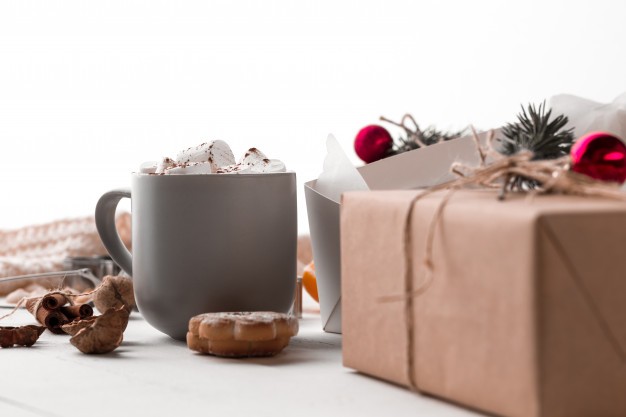
Prepare a Sustainable Christmas
Wondering how tp prepare for a sustainable Christmas? Christmas doesn’t have to be a burden on the planet. With a little effort and imagination, we can reduce the environmental impact of the holiday season. Here are some ideas to help celebrate the season while caring for the earth:
Buy Less – Some holiday gifts fill a practical need and need to be bought new. But many gifts are really gestures of thoughtfulness. You can give more while spending less.
Not all gifts have to be store-bought
You can give more while spending less by giving gifts that are personal and unique. While young children may favor bright, shiny store-bought items of the latest trends, most adults appreciate anything that shows thoughtfulness. Here we are sharing some great ideas for meaningful holiday gifts that aren’t found on store shelves.
Tips for Sustainable Giving:
Simplify the ‘Gift-Go-Round’
Feeling overwhelmed by a Christmas gift list that’s too long? Here’s a nice idea to help shorten your list and simplify the gift-giving ritual. You can do this with your family, colleagues, and friends- it is appreciated by all.
Before the holiday season begins (ie: NOW), put the names of all the adults on separate slips of paper and put the slips in a bag. Take turns picking one name per adult: the name you pick is the person you have to find a gift for. Keep your chosen pick a secret, to help maintain an element of surprise.
The LONG gift list for the adults has just been shortened to one! You can now focus on a special gift for the person whose name you picked, without the difficulty and expense of finding just the right gift for everyone. An agreed-upon spending limit will also help everyone from feeling they have to go overboard with a fabulous gift for the person whose name they chose.
Buy Smart: Think ‘Green’
Look for Locally Made Gifts – Many gifts in today’s marketplace come from halfway around the world, and the impact of transportation contributes significantly to greenhouse emissions and global warming. Local crafts and artisans are a good source for gifts that come without the added costs of transportation. And gifts made locally often have a story that goes with the gift, since the artisan and the origin of the gift are known.
A great way to teach children the spirit of giving (and simplifying) during the holidays is to ask them to pick three toys that they don’t play with very much and donate them to a homeless shelter, domestic violence shelter, etc.
Choose Gifts Made From Recycled Sources
Many individuals and small businesses have developed great products using recycled materials. Supporting these businesses helps reduce the waste stream while promoting the concept of making the best use of available materials. Here are some examples for you to consider: Gifts from recycled materials.
Give ‘Battery-Free’ Gifts
According to the EPA, about 40% of all battery sales occur during the holiday season. Discarded batteries are an environmental hazard. Even rechargeable batteries find their way into the waste stream eventually.

‘Re-gifting’ is Okay
There’s always discussion about the etiquette behind the trend to ‘re-gift’, that is, to pass on a gift you received but do not need. What’s to discuss? Re-gifting makes perfect sense. If you receive something you really don’t need, look for ways you can reuse this gift by passing it on to someone who can use it. Of course, re-gifting needs to be done with care so as not to offend the original giver, but keeping a gift you don’t need is wasteful.
Connect with Nature
Christmas is a time for giving and a time for family. What a great opportunity to start a family tradition of giving back to the earth and instilling the values of sustainable living to your children, friends, and community. Start an annual, earth-friendly, Christmas family tradition from the list below. It will also get you outdoors for a few hours to build an appetite for the big dinner.
Family Nature Hike
A peaceful walk through nature on Christmas day will be remembered and valued more than the score of virtual games. Plan your walk before the festive meal while everyone still has lots of energy. The walk will also pique appetites and provide a shared topic for conversation during mealtime.
Christmas hampers for an animal shelter staff and the pets there will provide joy for both the givers and receivers.
Nature Restoration Activity
Planting a small tree together symbolizes the value of nature and offsets the ‘taking’ of the Christmas tree. An hour spent cleaning up or enhancing a natural area also enriches the giver and acknowledges nature as the source of our well-being.
Decorate a Tree for the Birds.
Place seed bells, suet, pine cones with peanut butter, and seed trays on any tree in your yard, preferably a tree in the open where cats can be seen easily by the birds. To attract a wide variety of birds, use varied seed types such as black oil sunflower seed, and wild bird mixed seeds. This is a great activity for kids and offers an important food source for birds.
“Another way to make the Holidays more sustainable is to use a living, ‘normal’ tree as your Christmas tree. While not as large or full as the traditional trees, they can make quite an attractive, original Christmas tree.
These trees are a great addition to a house year round and they simply need to be decorated come Christmas time, saving much time and effort. They also eliminate the need to cut a tree each year or to buy a fake plastic tree, saving valuable resources.

Lower the Impact of Holiday Lighting
In the past, the house with the most decorative holiday lights used to be considered the ‘best’. Times have changed. The cost of electricity goes way beyond the utility bill. Electricity drains natural resources.
Reduce the Size of Outdoor Lighting Displays
A smaller presentation of lights can still be attractive, and more appropriate in the ‘season of giving. Saving electricity is also a way of giving since conserving resources benefits everyone.
Use LED lights for house and Christmas tree lighting – LED (Light Emitting Diode) holiday lights use up to 95% less energy than larger, traditional holiday bulbs and last up to 100,000 hours when used indoors. LED holiday lights use .04 watts per bulb, 10 times less than mini bulbs and 100 times less than traditional holiday bulbs. Over a 30-day period, lighting 500 traditional holiday lights will cost you about Rs 720 while the same number of LED lights costs only Rs 8. As an added bonus, if one of the LED lights burns out the rest of the strand will stay lit.
Outdoor mini-lights will also save energy
A 100-light string uses only 40 watts. If you’re buying a new set of lights, compare based on equal ‘lighted lengths’. Some higher priced brands have 100 mini-lights for only 8 1/2 feet of length, while some 100 mini-light strings cover up to 40 feet in length. For the most efficient outdoor holiday lighting, consider the new solar LED strings now available.
Turn off tree lights and outdoor house decorative lighting at bedtime. It’s simply a waste of energy to leave the holiday lights on at night after everyone’s gone to sleep.
Remember, never install lights with the power on. Test lights first, then unplug to install.
Choose a Live Tree
Although plastic Christmas trees are reusable from year to year, real trees are the more sustainable choice. Plastic trees are made of petroleum products (PVC), and use up resources in both manufacture and shipping. While artificial trees theoretically last forever, research shows that they are typically discarded when repeated use makes them less attractive. Discarded artificial trees are then sent to landfills, where their plastic content makes them last forever.
Live trees, on the other hand, are a renewable resource grown on tree farms, that are replanted regularly. They contribute to air quality while growing, and almost ninety percent are recycled into mulch. Live trees are usually locally grown and sold, saving both transportation costs and added air pollution. Live trees also smell like Christmas!
When buying a live tree, Consider:
Live potted trees can be used for years: If you buy a small tree in a large pot, you may be able to reuse the tree for 2- 3 years without having to plant or repot the tree.
Re-pot the tree for longer use: If your tree becomes root-bound, you can replant it in a larger pot for several years extended use.
Replant the tree when it becomes too large for your holiday tree: If you have the space, of course, replanting the tree outdoors is an option. Be sure to anticipate the full-grown size of the tree, and avoid planting near foundations or underground services.
Chip and mulch the tree: Many communities now have free chipping service for trees. This is useful since the chips are used as mulch for municipal landscaping or sold at low cost to gardeners. This chipped material makes an excellent mulch for your shrub beds and garden pathways.
Christmas Trees Can Be Recycled Too
Live trees that have been cut are a useful material for composting. Composting requires a carbon source and Christmas trees are just right for municipal operations which use chippers to shred the material. Look for tree drop-off locations in your neighborhood. Artificial trees which are up for replacement can also be recycled. These trees are usually made from twisted metal which is accepted by most recycling centers.

Make Homemade Cards
Store-bought Christmas cards are rich, elegant, and expensive. They also consume a huge amount of natural resources for a throw-away item. The amount of cards sold during the holiday season would fill a football field 10 stories high, and requires the harvesting of nearly 300,000 trees. Homemade cards may not be as professional, but they are more personal and just as appreciated. Making the cards is also a fun activity for the family during the weeks before Christmas. Even better, send a facebook message or email or even a whatsapp family photo.
Children’s art work is another good source for Christmas card pictures. Even the ‘scribblings’ of the very young ones are interesting, fun and especially appropriate for the season. Parents and grandparents, aunts and uncles will probably appreciate a ‘child’s art’ card even more than a store-bought card. Simply cut out sections of the artwork which look best, and glue-stick it to a card of the required size.
Making your own cards is easy if you have the material to work with. Try to get in the habit of saving pieces of heavy paper (good one side) to use as the backing for your glued-on pictures. “Card stock” is the ideal weight, and even small pieces are worth saving.
Find alternatives to wrapping paper
Half of the paper the world consumes each year is used to wrap and decorate consumer products.
In the USA alone, the annual trash from gift wrap and shopping bags totals over 4 million tons. If everyone wrapped just three gifts in reused paper or fabric gift bags, it would save enough paper to cover 45,000 hockey rinks.
Use Environmentally Friendly Wrapping Paper
Choose wrapping paper made using fibers such as hemp, or paper using recycled content.
Avoid Buying Glossy Foil or Metallic Wrapping Paper
You can do a beautifully wrapping job for your gifts without having to use metallic wrapping paper. This kind of ‘paper’ is difficult to recycle and it has no value for use as mulch since there are heavy metals used in the foil paper. Foil gift wrap is also harder to reuse, since it wrinkles and creases easily when the gift is being unwrapped.
Reuse Gift Wrap Where Possible
Large wrapped presents usually have large enough flat sections to be reused for wrapping smaller gifts. If you open large gift packages with care, the paper can be set aside for reuse for other gift-giving occasions. Fancy ribbons and bows, of course, can be stored in a box till next year when you’ll appreciate having them around and not having to buy new ones.
Use sticky tape sparingly, or not at all
If you’re going to use ribbon to finish off your wrapping, you may not need to use tape. By not using tape, more of the wrapping paper can be reclaimed, and it’s easier for the recipient to save the wrapping for reuse.
Choose Alternatives to Commercial Gift Wrap
There are many options which are cost-free, attractive solutions. Gift bags can be made using fabric scraps, or wrapping can be made using comic strips from the paper, old calendars, maps, posters and more.
Reuse/Recycle
Each year, over 100 million Christmas trees are purchased worldwide, about 60 million go to the landfill. And added to this is the carbon cost in transporting all these trees to the landfill. Much of the environmental costs associated with the holidays can be reduced by simple awareness and some pre-planning.
Reuse or Recycle Gift Packing Materials:
If Bubble wrap cannot be avoided, then it can be stored for reuse, or recycled. Foam packing chips are not as easily recycled; if you don’t want to store this material for reuse, try to find artisans or upcyclers and even people selling fragile items, who will accept it and use it again. Cardboard boxes should be opened flat and set out for recycling; storing and reusing these boxes is even better as no additional energy is used in re-manufacturing.
Save Any Special Gift Wrap, Ribbons, and Bows!
When unwrapping large gifts, save the paper for reuse; it can often be cut down for smaller presents. Creased wrapping can be ironed flat. Ribbons and bows are easy to save and reuse.
Recycle Old Electronics
New flat-screen computer monitors, laptops, cameras, cell phones, and other electronic items are common holiday gifts. Older models which are being replaced are usually still in working order, however, and should not be discarded to a landfill. See our Services page for proper recyclers.
Share This Article:
Do you have ideas which can help make Christmas a more earth-friendly celebration?
Let us know, and we’ll help spread the word!







